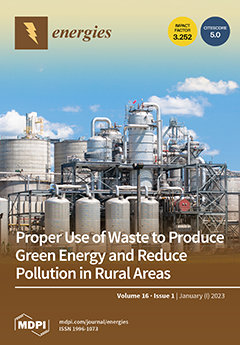This paper offers an algorithm to account for potential actions on the efficient production of renewable energy. The algorithm consists of a substantiated choice of a certain type of renewable energy, the evaluation of its potential, and the regulation of the processes of
[...] Read more.
This paper offers an algorithm to account for potential actions on the efficient production of renewable energy. The algorithm consists of a substantiated choice of a certain type of renewable energy, the evaluation of its potential, and the regulation of the processes of obtaining that renewable energy. Also, potential resources for agricultural biofuel production have been analyzed and it has been determined that there is real biomass potential in Lithuania. It will thus be beneficial to make appropriate managerial decisions on the methods of biofuel processing and consumption, as well as on means of receiving the economic, energy and environmental effects. The total potential of by-product biomass of crop production was determined, and the thermal and electric potential of the crop by-products were calculated. Additionally, the potential for production of gas-like types of fuel (biomethane, biohydrogen, and syngas) from crop by-products was determined. The potential for the production of diesel biofuel from oil crop waste (bran) was also found, and the potential for livestock by-products for receiving gas-like types of fuel (biomethane, biohydrogen) was established. The corresponding thermal and electric equivalents of the potential were found and the potential volumes of the biomethane and biohydrogen production were calculated. The total energy equivalent equals, on average, 30.017 × 10
6 GJ of the thermal energy and 9.224 × 10
6 GJ of the electric energy in Lithuania. The total potential of biomethane production (taking into account crop production and animal husbandry wastes) on average equals 285.6 × 10
6 m
3. The total potential of biohydrogen production on average equals 251.9 × 10
6 m
3. The cost equivalents of the energy potential of agrarian biomass have been calculated. The average cost equivalent of the thermal energy could equal EUR 8.9 billion, electric energy—EUR 15.9 billion, biomethane—EUR 3.3 billion and biohydrogen—EUR 14.1 billion. The evaluation of the agricultural biomass potential as a source of renewable energy confirmed that Lithuania has a large biomass potential and satisfies the needs for the production of renewable energy. Thus, it is possible to move to the second step, that of making a decision concerning biomass conversion.
Full article





